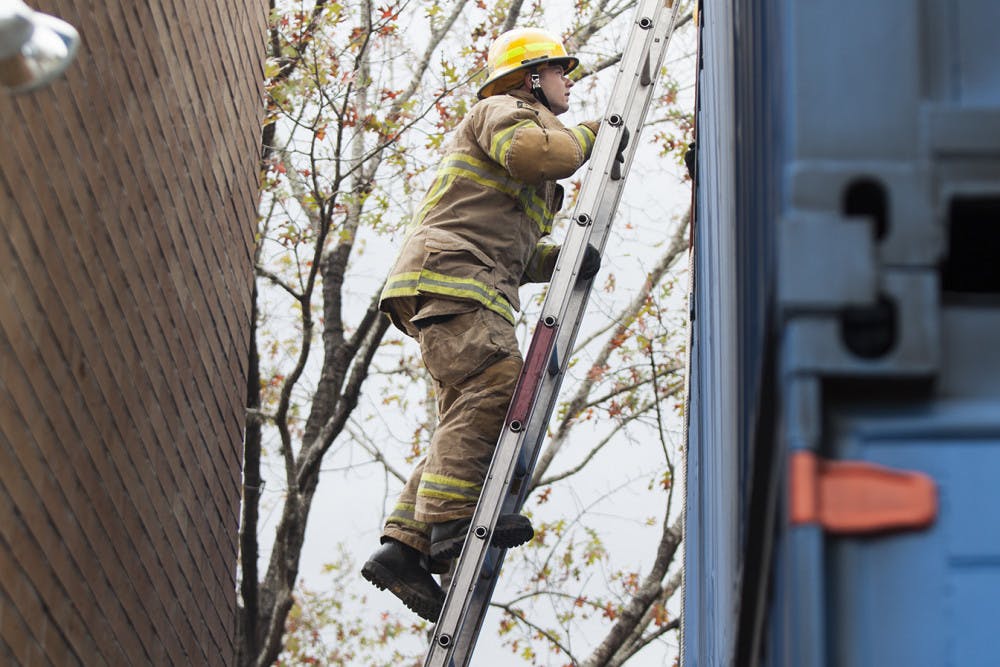More than 120 active wildfires burned throughout Florida on Friday morning.
“This is one of the worst wildfire seasons that Florida has had in years,” said Aaron Keller, the spokesperson for the Florida Department of Agriculture and Consumer Services.
So far this year, more than 2,000 wildfires have burned more than 150,000 acres across the state, according to the FDACS’ Current Fire Conditions. On April 11, Gov. Rick Scott signed an executive order declaring a state of emergency, citing the state’s severe drought conditions and seven large wildfires across the state, including one in Marion County that burned about 700 acres.
It’s the first time in six years since a similar emergency has been declared, Keller said.
“Florida is kind of a feast-and-famous state where there is either a lot of rain and almost flood conditions, or there is drought,” Keller said. “Some areas of the state are more affected than others.”
Nearly every region of the state — except the Panhandle — has seen larger wildfires sooner in the year than in the past, said Ludie Bond, a Florida Forest Service spokesperson for North Florida. In the five counties her forestry center manages — Alachua, Putnam, Marion, Levy and Gilchrist — 14 fires are still actively being managed. Crews are clearing burnable debris and hosing down embers to ensure the fire doesn’t spark back up again, Bond said.
“It just takes a lot of manpower and a lot of time going out there everyday, getting in there with water and hoses and brush trucks,” she said.
While Alachua County hasn’t yet felt the effects of the statewide wildfire surge, Alachua County Fire Rescue Chief Bill Northcutt said he and his fighters are on alert.
“We’re always real conscious this time of year,” he said. “The winter and early spring are always a difficult time for us.”
Last year, Northcutt and his force worried about the potential for wildlife fires, but heavy rains eventually came in spring, saturating the ground and settling their fears of fires in the hotter summer months.
This year is different, though, Northcutt said. The weather’s drier than before.
Keller said this year’s drought is likely a result of the La Nina effect, a major weather event that occurs every few years. Last year, some areas in the state had more rains than anytime on record, which can cause a rebound in drier weather, he said.
“On the heels of (La Nina), often there is long periods of drought,” Keller said. “And that is what we’re experiencing now.”
Keller said officials expect conditions to continue through the rest of May, June and into July.
AFR and the Florida Forest Service recommended that the Alachua County Board of Commissioners implement a burn ban, which puts a halt on fireworks and any unpermitted outdoor burning to lower the risk of a major fire outbreak, Northcutt said. The ban took effect April 25.
“It’s typically carelessness,” Northcutt said, referring to the usual causes behind even the largest wildfires. “If it’s not acts of God, it’s acts of man.”
At this point in the season, even the possibility of small showers in the coming days wouldn’t help the drought, Northcutt said.
“Even if we get an inch (of rain) that won’t have any effect on this drought,” he said. “It might minimize the risk for a day or two. We really just need sustained rain for a week or more.”
For Charlie Canal, these conditions point to climate change.
Canal, a UF alumnus who graduated in May with a bachelor’s degree in forestry, said aside from history of wildfires in Florida, these types of widespread wildfires will pop up more frequently because of man’s influence over ocean and atmosphere temperatures.
“Everything is just becoming warmer, and it’s causing more droughts over time,” the 23-year-old said.
Canal said the current weather conditions — low humidity in the air, dry plants and vegetation — are ripe for fires to spread out of control.
“Hopefully it rains, because that’s what we really need,” Canal said.
Contact David Hoffman at dhoffman@alligator.org and follow him on Twitter: @hoffdavid123.






